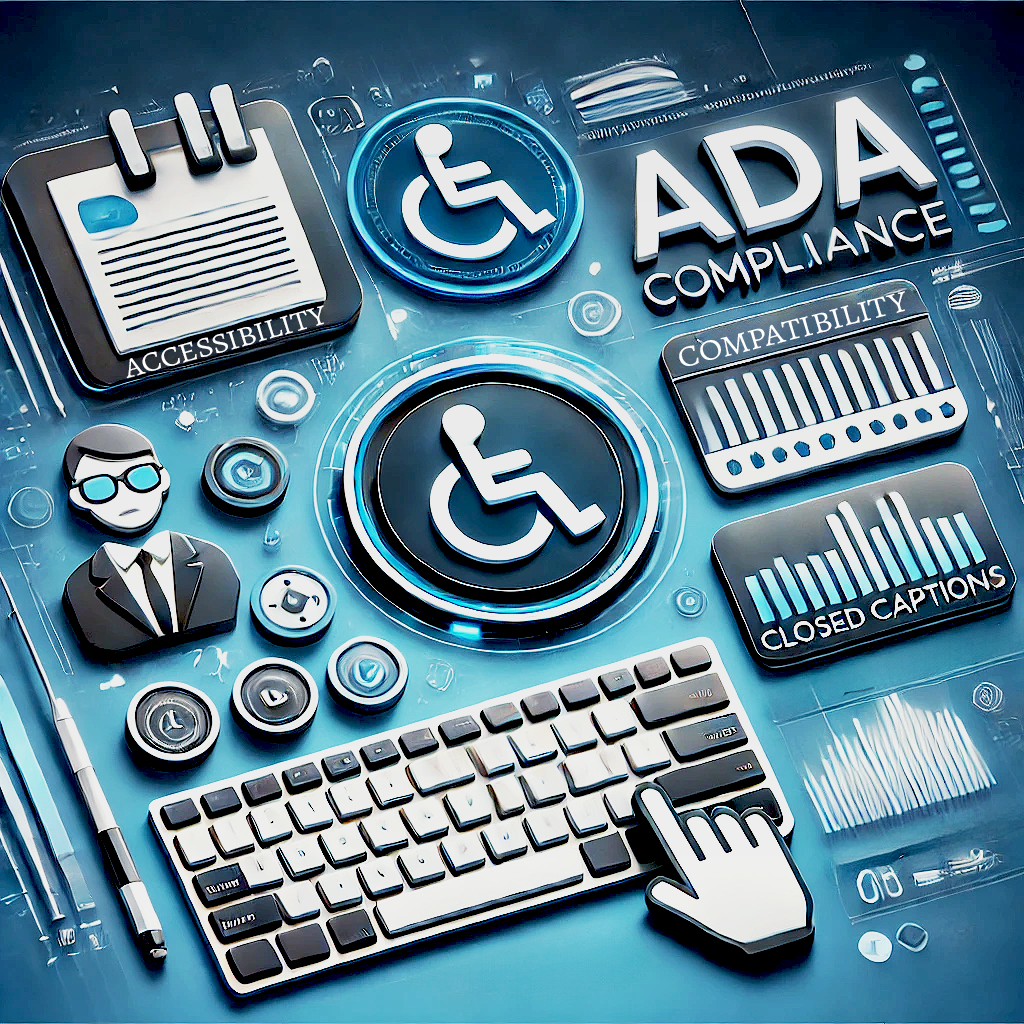Ensuring that your software solutions are accessible to all users, including those with disabilities, is not only a legal obligation under the Americans with Disabilities Act (ADA) but also a commitment to inclusivity and user-centric design. Integrating ADA compliance into your development process enhances usability and broadens your audience reach. Here are the top 10 ways to ensure ADA compliance when building software solutions:

1. Keyboard Accessibility
- Ensure all interactive elements (buttons, menus, forms) are fully navigable using only a keyboard (tabbing, arrow keys, enter, space).
- Avoid reliance on mouse-only interactions.
2. Screen Reader Compatibility
- Use semantic HTML and ARIA (Accessible Rich Internet Applications) attributes to enhance screen reader usability.
- Ensure all essential text is readable and not hidden in images or non-accessible elements.
3. Alternative Text for Images
- Provide clear and descriptive alt text for all images, icons, and non-text content.
- Avoid using "image of" or "photo of" in descriptions—be specific and meaningful.
4. Color Contrast & Visual Clarity
- Text and UI elements should meet WCAG (Web Content Accessibility Guidelines) contrast ratios (4.5:1 for normal text, 3:1 for large text).
- Do not rely solely on color to convey meaning; use icons, text labels, or patterns as well.
5. Captions & Transcripts for Multimedia
- Provide closed captions for videos and transcripts for audio content.
- Ensure auto-generated captions are reviewed for accuracy.
6. Resizable Text & Flexible Layouts
- Allow users to adjust text size without breaking the layout.
- Use responsive design principles to ensure accessibility across different screen sizes and devices.
7. Accessible Forms & Error Handling
- Provide clear labels and instructions for all form fields.
- Use ARIA alerts or messages to indicate errors in real-time with descriptive feedback (not just color changes).
8. Avoid Auto-Playing Media & Time Limits
- Do not use auto-playing videos, sounds, or animations that users cannot control.
- Provide options to extend or disable time-based interactions for users with cognitive disabilities.
9. Consistent & Predictable Navigation
- Maintain consistent menu structures and navigation elements across pages.
- Ensure interactive components behave predictably and do not change context unexpectedly.
10. Compliance with WCAG Guidelines
- Follow WCAG 2.1 Level AA standards, which outline best practices for accessibility.
- Regularly test with automated tools and real users with disabilities to identify and fix issues.
ADA compliance is not just about legal requirements. It is about creating software that is usable for everyone. At Code Scientists, we build accessible, user-friendly software that meets compliance standards while delivering a seamless experience for all users.
Ping us to discuss accessibility in your next software project!
